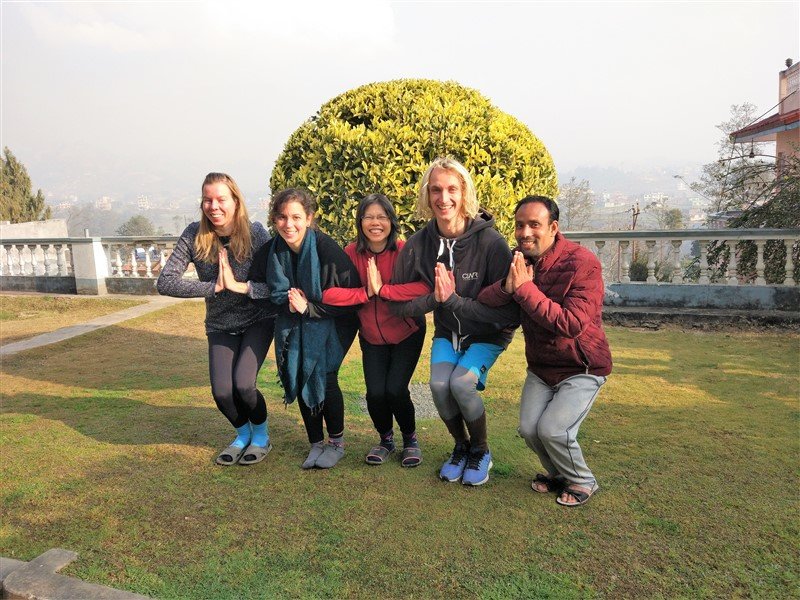
by Tirtha Acharya | Apr 11, 2018 | Yoga
You have heard the benefits of yoga. Yoga helps to relax your mind body and soul. So you are new to yoga. We’ve got most of the answers for you. Yoga for beginners focuses on the relaxation and other benefits. This article answers the 5 common questions about yoga for beginners. Yoga helps you to go to a deeper practice and mindful meditation.
1. Actually, What Is Yoga?
The word yoga, from the Sanskrit word yuj means to bind. It is often interpreted as “union” or a method of discipline. The Indian sage Patanjali is believed to have begun the practice of yoga. He compiled a book called Yoga Sutra. Patanjali compiled this book an estimated 2,000 years ago. It is a collection of 195 statements that serves as a philosophical guidebook for most of the yoga that is practiced today. The physical postures in yoga are designed to purify the body. In addition to that also provide the physical strength and stamina required for long periods of meditation.
2. How Many Times Per Week Should I Practice Yoga?
Yoga is very amazing. You can experience the benefit of yoga after just a practice for a week. In addition to that you will certainly experience more benefits, if you do more. Yoga for beginner should start with two or three times a week, for an hour or an hour and a half each time. It is also fine if you do 20 minutes per session. There is no time constraints or unrealistic goals Do what you can and don’t worry about it. You will be able to find that after a while your desire to practice expands naturally and you will want to do more and more.
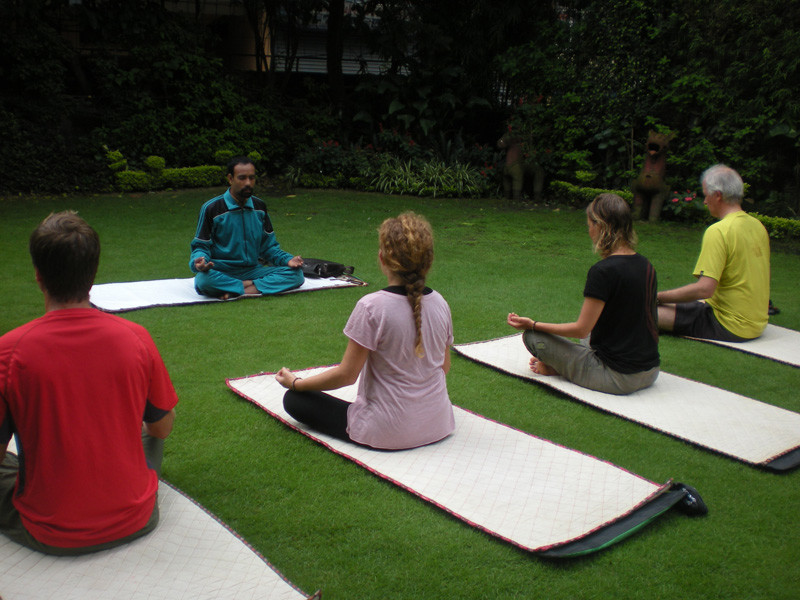
3. How Is Yoga Different From Other Kinds of Fitness?
Yoga is more than just physical postures, while fitness is about physical postures. Yoga contains physical practice. Even within the physical practice, yoga is unique. Because in yoga, we connect the movement of the body and the fluctuations of the mind to the rhythm of our breath. In addition to that connecting the mind, body, and breath helps us to direct our attention inward. We tend to become more aware of our experiences from the moment after moment. The awareness that we cultivate is what makes yoga a practice. Most noteworthy is that it is more than a task or a goal. Your body will most likely become much flexible by doing yoga along with your mind.
4. Does Flexibility Matters in Yoga?
No. You don’t need to be so much flexible in Yoga. If you are not so much flexible, then yoga is for you. Most of the people think that they need to be flexible to start yoga. But that is a little bit like off thinking. Yoga wants you to come as you are and you can find that yoga practice will help you become more flexible. Your strength and coordination will balance your newfound agility . In addition to that your overall sense of physical confidence and well-being increases.
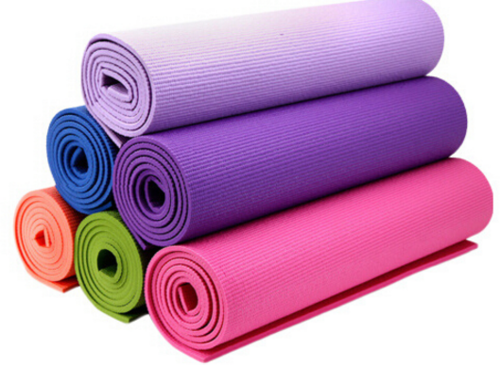
5. What Do I Need as Yoga for Beginners?
You need your body and your mind to start yoga. In addition to that, you need a bit of curiosity also. As regards clothing, you need a pair of yoga leggings, or shorts, and a t-shirt. You will be barefoot, so no shoes or slippers are ok. You should bring a towel along with you to your yoga class. Also carry your own yoga mat but we also have yoga mats available for you.
Nepal Yoga Home, a pioneer yoga retreat in Kathmandu offers yoga class. Check out our yoga classes from beginner level to advanced level. There is also a facility of yoga teacher training and yoga certification courses.

by Tirtha Acharya | Apr 11, 2018 | Yoga
Try Yoga In Kathmandu Once to Get 44 Integrated Benefits of Yoga
Nepal Yoga Home is a leading retreat center of yoga in Kathmandu as well as best yoga school in Nepal. The place where the yoga classes conduct is just 5 km from the heart of the Kathmandu, Thamel. This is very natural and quiet place to stay and practice yoga. The yoga class here can give you very different experience in your lifetime which you haven’t got to experience yet. Nepal is the birthplace of yoga, so you will get very authentic and traditional yoga in Kathmandu, the capital city of Nepal.
Yoga word is derived from Sanskrit “Yuj” which means to unite. Yoga means to unite our self with the higher consciousness. Yoga has been practiced from the ancient time. Yoga can balance our body, mind, and soul. Yoga includes all the poses, breathing exercises, and meditation practice. Yoga is very useful to relax in life and to be free from the stresses of life. Yoga can be very useful for physical and mental problems
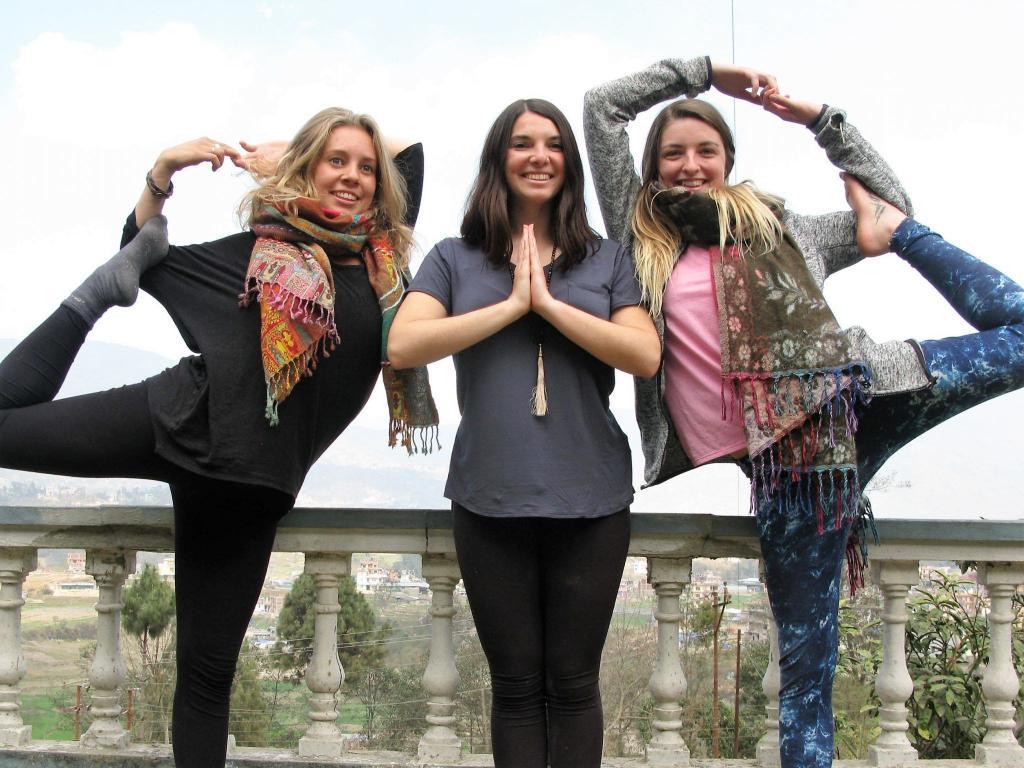
44 Benefits of Yoga in Kathmandu
- Yoga class provides you the break of your busy life.
- Yoga can help you to improve your stamina and all kinds of physical activities.
- Yoga helps you to increase your body strength.
- You will understand yoga is not different from your life, it is life itself.
- You will understand the secret of the good relationship.
- Yoga balances the mind, body and soul.
- Yoga eliminates all the aches and pains of the body.
- Yoga can be useful to throw the trauma from the past.
- Yoga improves your sleeping.
- Yoga can heal the heart injuries.
- Yoga gives you the strength to cry to wipe out all the negativities.
- Yoga gives you the power to laugh openly.
- Yoga improves your concentration power.
- Yoga improves your memory power.
- Yoga releases the positive hormones on the brain.
- Yoga gives you the courage to go ahead in your life.
- Yoga can improve your postures which can inspire to stand straight.
- It improves your posture so you can stand tall and be proud.
- Yoga can detoxify your body which leads healthy body.
- By the help of yoga, you will find the reason of your frustration.
- Yoga is the medium of anti-aging which keeps you younger.
- Yoga increases your immune power and immune power prevents the diseases in your body.
- Yoga helps you to be aware in your life.
- You can be satisfied with your life as it is.
- Yoga helps you to have a different perspective which leads you to the harmony with the people.
- Yoga gives you the strength to forgive yourself and you will become free from the guilt of your life.
- Yoga gives you the awareness in eating. You will be able to choose the best food for you and best way to live in the world. Which you will get if you tried yoga in Kathmandu.
- Yoga limits the level cholesterol which keeps you free from the stress.
- Yoga encourages you to make your time playful.
- Yoga enables you to have a connection between you and the people around you.
- Yoga is helpful for the back pain.
- Yoga can lower your blood pressure.
- Yoga is helpful to stay still when you stuck in the traffic.
- Yoga gives you the strength to see the matter clearly.
- Yoga can massage the internal part of your body which is useful to fight the diseases.
- You can able to let go everything in your life.
- Yoga can give the knowledge how to heal the parts of your body.
- Yoga enables you to find the inner beauty in your life.
- Yoga increases the rate of blood circulation which is used to eliminate the diseases of the body.
- You can be able to relax whenever you want.
- Yoga gives you the secret to happy and joyful life.
- Yoga is the way for the satisfactory life.
- Yoga can be the best way to improve the study in your life.
- You will understand that perfection is not possible in life and it is not necessary in life.
If you practice yoga in Kathmandu at Nepal Yoga Home, you will definitely get the above mention benefits of yoga here in Kathmandu. We will teach all these integrated benefits of yoga.
The specialty of Yoga in Kathmandu
Kathmandu valley is one of the most pre-eminent locations in Nepal for Yoga. It is supposed to be one of the most chronicled places for yogic and spiritual practices. It can also be said a city of the temple where most of the ancient temples share a great massage and teachings of Tantra Yoga since the primitive era. You will find several motifs and types of Yoga in Kathmandu. You have many choices and options for yoga in Kathmandu according to your level of practice.
People from all over the world are welcomed different forms of yoga courses in Kathmandu. People of all age groups, different races, can join various yoga training in Kathmandu since yoga is for unblemished and plenary humans where no division is made. You can join 200-hour yoga teacher training, 300-hour yoga teacher training, 500-hour yoga teacher training, etc. to prepare yourself for becoming a qualified yoga teacher at the native level and at the international level.
Along with the teacher training, you will find a stupendous yoga and meditation retreat in Kathmandu to rejuvenate the self. Yoga is the path of self-reinvigoration in the true sense where hermetical virtues and veiled potentialities get exposed. You will get a chance to awaken the self through yoga and meditation retreat of varieties of duration. For example, you can join a yoga retreat for 1 day, 3 days, 1 week, 15 days, 3 weeks, 1 month till three months. According to the time available, you can learn if you are a beginner and deepen into your practice if you are already a yoga practitioner.
The atmosphere here available is best suited for the depth-level practice of yoga in Kathmandu as many enlightened masters and Sadhakas (spiritual practitioners) leave yogic waves during the course of their practice since primordial time. Temple Pashupatinath, one of the world heritage, where Hatha Yogi Lord Shiva recharges this place in the ancient epoch.
The forest area around or near Pashupatinath is an amazeballs for tantra or other varieties of yoga in Kathmandu. Swayambhunath Temple, also one of the world heritages, is another momentous temple that creates enlightening vibration of Lord Buddha. We know that Kathmandu is circled with the ranges of mountains, and in the mountains, there are many historical salient abodes, spots, caves, etc. It may take a number of years to prospect the mountain outright.
Nagarjuna Jungle in Kathmandu was named after a disciple of Buddha, Nagarjuna, who meditated in the vary Jungle has another historical importance for yoga in Kathmandu. Nepal Yoga Home is located at the lap of the Nagarjuna jungle where people from more than 100 countries come to practice yoga.
There is another spiritually significant stead in Kathmandu, which is Shivapuri Mountain where Shivapuri Baba, a prodigious yogi of Nepal, meditate in the mountain. Kathmandu, for sure, is the best suitable place to learn yoga asanas and meditation (yoga-dhyana) because of its historical, natural, cultural, and environmental factors.
Yoga Center in Kathmandu
There are some yoga centers in Kathmandu. Among them, Nepal Yoga Home is a great choice to learn in an affable environment in the soothing allure of nature. If you are seeking for best yoga training in Kathmandu, Nepal Yoga Home is ready for you with a warm welcome. It is neither in the crowded area nor far from the city, but separate from the city environment to get the serenity of the Silence.
Kathmandu has a lot of things regarding mystic and occult knowledge, yoga, and spirituality, corporeal and incorporeal augmentation, holistic health and wellbeing, history, art, culture, tradition, ancient music and song, and so on to reconnoiter; out of those, learning yoga has become the most earnest for entire global students.

by Tirtha Acharya | Apr 11, 2018 | Yoga, Ayurveda, Yoga Therapy, yoga training and yoga courses
Ayurveda is a type of ancient system of medicine. It has historical roots in the Indian subcontinent. Today, Ayurveda traditions is a type of alternative medicine. It is also a complementary medicine due to globalization and modern practices. Medical professionals are integrating Ayurveda therapies and practices in general wellness applications and in medical use. Since ancient times, Nepali people are using Ayurveda. In this article, we explore Ayurveda in Nepal.
The word “ayurveda” means “life-knowledge”. The central theoretical ideas of Ayurveda was developed in the mid-first millennium BCE, and show parallels with Sāṅkhya and Vaiśeṣika philosophies, as well as with Buddhism and Jainism. In Ayurveda balance is emphasized, and suppressing natural urges is considered unhealthy and claimed to lead to illness. Ayurveda in Nepal is just about these balance and suppression.
Human beings are part of nature. Ayurveda describes three fundamental energies that govern our inner and outer environments. In addition to that movement, transformation, and structure. In Sanskrit is called as Vata (Wind), Pitta (Fire), and Kapha (Earth). These primary forces are responsible for the characteristics of our mind and body. Each human being has a unique proportion of these three forces that shape their nature. If Vata is dominant in our Ayurvedic Consultation system, we tend to be thin, light, enthusiastic, energetic, and changeable. If Pitta predominates in our nature, we tend to be intense, intelligent, and goal-oriented and we have a strong appetite for life. When Kapha prevails, we tend to be easy-going, methodical and nurturing. Although each of us has all three forces, most people have one or two elements that predominate.

Ayurveda in Nepal has a glorious history. Nobody knows since when Ayurveda in Nepal is present. There is no official record about Ayurveda and its reach in Nepal. But Ayurveda in Nepal exists since ancient time. In addition to that festivals and rituals also have some kind of Ayurveda flavor. Nepali people use Ayurveda to prevent diseases. The theories and philosophies are described in Ayurveda in Nepal. All of the above facts show that there is a long tradition of Ayurveda in Nepal. It has the long and deep attachment to Nepali culture. Ayurveda in Nepal is a social and cultural therapy.
In the current time, people are fed up with this congested, synthesized and unnatural environment. People want to return back to nature. This reversed path has also affected the treatment system in Nepal. Nepali have started to be conscious about their health. They have started to think about the food they eat and the medicine they use. In addition to that, they prefer natural things over synthesized and unnatural things. Ayurveda is also a natural therapy since it interrelates the living body to biological, mental and spiritual activities. It also prescribes the natural herbal and metallic medicine. We can take such medicines from our surrounding. People prefer Ayurveda in Nepal and its products. Numbers of visitors to the Ayurveda in Nepal have dramatically increased during these years.
Benefits of Ayurveda in Nepal
- The main benefit of the Ayurveda treatment is that it has no side effects. We prepare Ayurveda products by using the essence of fruits, spices, vegetables and natural herbs. These natural ingredients help in curing diseases without causing any other problem.
- The treatment of Ayurvedic treatment may not be fast but it is very effective. Ayurvedic treatments effective in the permanent cure of the disease.
- Ayurveda has successfully been able to cure and manage diseases like Piles, Rheumatoid arthritis, Jaundice, etc.
- Ayurvedic products and medicines help in decontaminating our body and cleansing it through natural methods and practices
- The Ayurvedic products are environment-friendly as we prepare it from organic products. They don’t cause any harm to the environment and the surroundings.
Furthermore, Nepal Yoga Home is a pioneer yoga retreat in Nepal. We organize yoga training in Nepal and Yoga teacher training in Nepal. In addition to that, we also have courses that include meditation.

by Tirtha Acharya | Apr 10, 2018 | Yoga, Yoga Therapy, yoga training and yoga courses
Every year thousands of people travel to exotic locales to experience the benefits of attending a yoga retreat in yoga retreat center. If you’ve ever considered going on Nepal Yoga Retreat to experience the course of retreat and detox, then it is a good idea. You receive there the authentic and traditional style of yoga meditation and other aspects of yoga.
In this article, you will learn what you can get out of Nepal yoga retreat center in Nepal . There are many good reasons you should look in to this type of vacation option rather than the typical aimless sightseeing. Make most out of your vacations. Furthermore, if you want to let go of stress and meet open-minded, then join Nepal yoga retreat. In addition to that get fit and experience once in a lifetime experience. Yoga Retreat in Nepal is very traditional, authentic and directly connected with the source of yoga & hence there is no place better than Nepal for Yoga Retreat.
1. Get Disconnected From Technology
Nepal yoga retreat is not a digital detox. If you go on a yoga retreat in Nepal vacation, then it is a perfect excuse to disconnect from technology and get back to basics. So many of our jobs now require us to be on call and connected 24/7. Even if our jobs don’t demand, we end up spending a large amount of our time on social media and fixed to screens. Learn to be in the moment and away from digital distractions by going on a Nepal yoga retreat center.
2. Travel With Purpose In Nepal Yoga Retreat
Travel most of the time seems like a venture in box-ticking. It is like trying to complete a never-ending bucket list. Why not go on yoga retreat in Nepal. Going on a Nepal yoga retreat gives you a reason to travel with a pure purpose. yoga retreat center in Nepal is also about giving back to the community. Along with that time for personal growth, which is an amazing added benefit.
3. Take Time For Yourself In Nepal Yoga Retreat
We give so much of ourselves in our daily lives. It can be difficult to really take a moment just for ourselves. While you can meet some amazing people on Nepal yoga retreat, you can also use it as an opportunity to be alone. Wellness travel is all about taking that time for yourself. And is also a top reason to go on a yoga retreat. Visit Nepal Yoga Home, the very popular yoga center in Nepal and experience some classes which relax you Immediately and you don’t like to leave the place for few days.
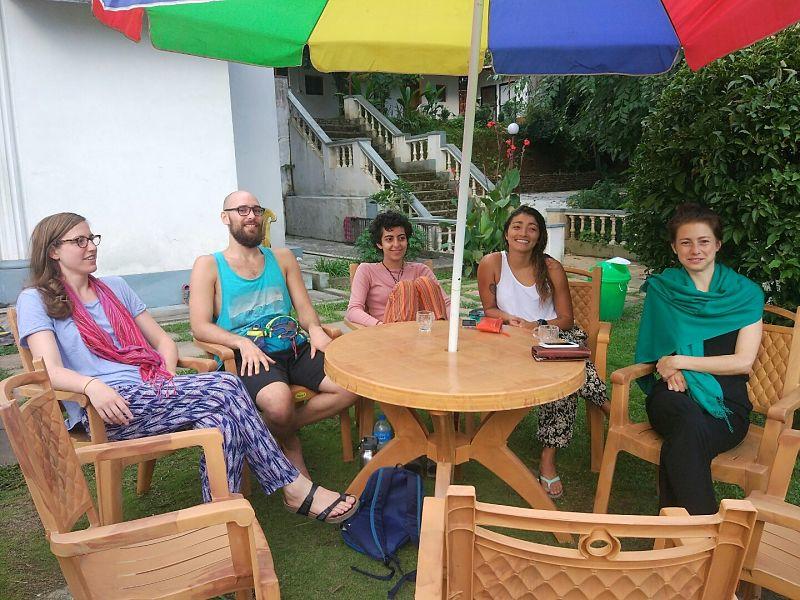
4. Discover A New Perspective in Yoga Retreat Center in Nepal
You can get a new perspective after you attend a yoga retreat. Either it’s about your own life or through learning about a new culture. You never know what you can learn from others. In addition to that it can affect your future choices and make you see your own circumstances in a different perspective.
5. Stop Overthinking At Nepal Yoga Retreat
You may find it impossible to silence your mind. And you’re always thinking of the next thing you need to do then a Nepal yoga retreat gives you a great opportunity to stop overthinking. Use a Nepal yoga retreat to turn off all the noise of your own voice. In addition to that open yourself to a more positive way of thinking. Meditation is often part of a yoga retreat program adopt by the yoga center, and you can speak to your guru about helping you to harness your thoughts.
Visit Nepal Yoga Home, a pioneer yoga retreat in Kathmandu and yoga retreat center in Nepal. We provide all range of services like yoga training in Nepal, yoga teacher training, yoga certification. Our professional and experienced gurus have different teaching style. We impart knowledge from beginner level to advanced level.
This yoga center, Nepal Yoga Home is run by the yogis who are the most dedicated and determined personalities who have an enormous vision to contribute to enhancing the authentic Himalaya yoga throughout the world. The yoga school has already been privileged to extend its wisdom to the yoga enthusiasts from about 80 countries.

by Tirtha Acharya | Apr 10, 2018 | Yoga, Yoga Therapy, yoga training and yoga courses
A yoga retreat is a place to focus so that you can practice yoga. The yoga retreat can either be solitary or local. However, a yoga retreat often involves a trip to a location that offers yoga. The purpose of a yoga retreat is to allow yogis to deepen their practice. There is no any kind of distractions of life in a yoga retreat in Kathmandu, Nepal. In a yoga retreat in Kathmandu, you can stay from a week to more. Nepal Yoga Home is a pioneer yoga retreat in Kathmandu. We offer from beginner level to advanced level. We also offer yoga teacher training in Nepal. In this following article, we explore the reasons to go on the yoga retreat in Kathmandu.
Kathmandu is the capital city of the Federal Democratic Republic of Nepal. It is the largest metropolis in Nepal, with a population of 1.5 million in the city proper, and 3 million in its urban agglomeration across the Kathmandu Valley, which includes the towns of Lalitpur, Kirtipur, Madhyapur Thimi, Bhaktapur and the municipalities across Kathmandu valley. Kathmandu is also the largest metropolis in the Himalayan hill region.
The city stands at an elevation of approximately 1,400 meters (4,600 feet) above sea level in the bowl-shaped Kathmandu Valley of central Nepal. The valley is historically termed as “Nepal Mandala” and has been the home of Newar culture, a cosmopolitan urban civilization in the Himalayan foothills. The city was the royal capital of the Kingdom of Nepal and hosts palaces, mansions and gardens of the Nepalese aristocracy.
Reasons To Go Nepal Yoga Home For Yoga Retreat
1. Yoga Retreat Is Time Out For Yourself
It is a huge difference between going on holiday and going on retreat. It is quite often that holidays can be more about doing, while a retreat is simply about being. Holidays mostly involve other people, while retreat involves only you. You have to compromise about where to go on a holiday. However, in a yoga retreat in Kathmandu. you have to listen to yourself. It is about listening to all your needs.
Most yoga retreat in Kathmandu will encourage you to leave the outside world behind and step away from all stresses. This may drain your time and energy. In addition to that, it tends you to put the focus on doing less. Furthermore, you will have time from your previous day-to-day activities and you can feel refreshed. Along with that you will feel refreshed, renewed, re-inspired, and deeply rested. At best a yoga retreat in Kathmandu can help you to gain clarity and seek for deeper truth.

2. Deepen Your Practice at Yoga Retreat in Nepal Yoga Home
There may be a lot of reasons for how a yoga retreat will help you. In addition to that, you can possibly even soar above. Most yoga retreats include twice daily yoga, which in itself will increase your strength, flexibility, and your awareness of your own practice more than you would ever believe. The main gift a yoga retreat in Kathmandu gives you is that it takes you out of your comfort zone.
We like routine, and so in your regular class with your regular teacher, it’s easy to get caught up and continue to do the same things. On a yoga retreat in Kathmandu, you’ll be in completely new, and often inspiring, surroundings with new people and a new teacher. The main focus of your day is being about you and your practice. It’s the perfect time at yoga retreat is to explore new things.
3. Learn Something New
Nepal Yoga Home offers amazing yoga retreat activities. You can take far more than a deepened practice and peace of mind away with you. In a yoga retreat in Kathmandu, combine yoga with learning all about Ayurveda. In addition to that, you can learn about how to develop a lasting mindfulness practice. Furthermore, find out about the benefits of nutrition and foods.
Make your yoga come to life by exploring the beautiful ancient wisdom and philosophy of yoga. And even combine your passions for yoga and walking or writing.
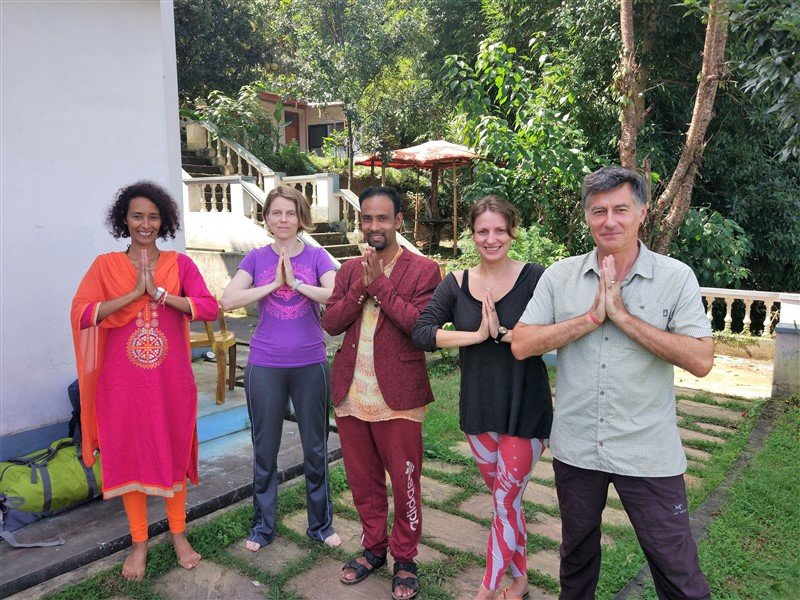
by Tirtha Acharya | Apr 8, 2018 | Yoga, Yoga Therapy, yoga training and yoga courses
Yoga contributes to the development of a healthy body. Apart from the healthy body, yoga is essential for healthy mind and healthy thoughts. You can achieve a balanced, harmonious and integrated lifestyle only through yoga. If you need a pathway to true, happy and healthy living, then it is only possible through Yoga Nepal. Nepal Yoga Home is the best Yoga Nepal retreat so that you get the best services.
The Eight Fold Path of Yoga, from sage Patanjali’s yoga sutra delves deeply into the mortality of living and explores the human psyche. It consists of: Yama (self restraint), Niyama (self observance) Asana, Pranayama (breathing techniques), Pratyahara (withdrawal of the senses), Dharana (concentration), Dhyana (meditation) and Samadhi (identification with pure consciousness).
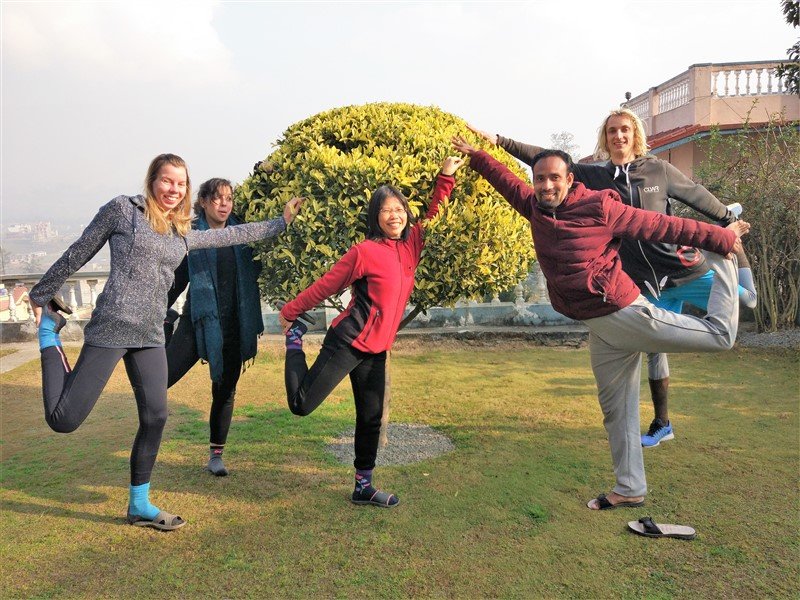
Most people believe that yoga just means postures that develop flexibility, general body health and awareness. However, this is only the beginning while you start learning yoga. The central theme of Nepal yoga is to achieve the highest goal of the spiritual path. Yogic practices give direct and tangible benefits to everyone. Yoga Nepal has everything for everyone regardless of their spiritual aspirations.
Yoga Nepal at Nepal Yoga Home
First of all, according to Vedic sources, Yoga and meditation is inter-related. Some part of Lord Buddha’s contribution to humanity was to focus on meditation to develop ethics and morality. It depends upon you whether you choose to focus on yoga, or meditation. Yoga Nepal helps you to fulfill both of these.Nepal a yoga home is land of pioneers of Yoga. Great sages like Baba Gorakhnath, Shivapuri Baba, Khaptad swami and other countless souls got enlightment in Nepal. From past till the present many people have made it a way of life. There are many traditions of Yoga and yoga is way of life which supports Nepal is a true yoga home. Yoga Nepal has gained continuity with yogis from Nepal Yoga Home like our founder, Yoga Guru Prakash Acharya.
Yoga and meditation are age old practices. In addition to that people believe that yoga can heal the problems. And Yoga Nepal results in peace and happiness. The yoga teacher often called guru. You need a good and experienced guru so that you can have the experience that you deserve. Nepal Yoga home is here to guide you with all the services. At yoga Nepal, you will get the best yoga and meditation teachers. You can stay in peaceful meditation and retreat center of Nepal Yoga. Nepal is home of different spiritual techniques and specially the meditation.
5 Reasons to Choose Yoga in Nepal
- Vyas Rishi was born and meditated in the caves of the Himalayas who further developed Eastern philosophy by writing The Puranas, and achieved the highest level of wisdom.
- Lumbini, Nepal is the birthplace of Lord Buddha. In addition he preached of world peace through his meditation and dissemination of wisdom.
- Most of all, Nepal was the center of meditation for Pāṇini, the greatest Grammatical scholar of the Sanskrit language (Dev Vasha), which is the oldest known language on Earth.
- King Janak, who achieved salvation before death and was known as the King of Sages, practiced meditation and probably spiritual practices.
- Guru Gorakhnath, a great Vaishawik practitioner/preacher and the modern exponent of Hatha, Tantra, Mantra traditions; was born and lived in Nepal. Also his followers are called yogis.
Furthermore, Nepal Yoga Home is a pioneer yoga retreat in Nepal.Since our establishment we are providing different programs like yoga and meditation retreat (one night yoga and meditaion retreat to several night yoga and meditaion retreat), Stress management program, life changing packages, mantra chanting, Therapeutic yoga class, massage (on request basis) and many other programs.













